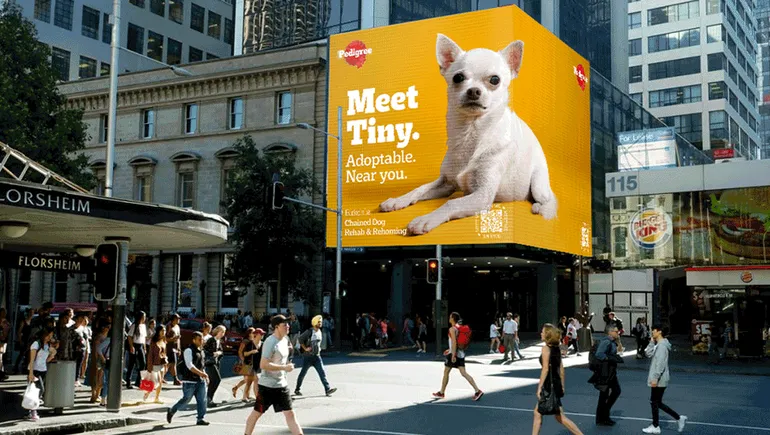
What's in a flagship?
Gap closing stores isn’t really news. The apparel retailer has been closing hundreds as it works to build back its brand, grow its e-commerce and get away from the mall. The company just announced yet more will shut down this year and next.
But closing its flagship in hometown San Francisco, near the touristy Union Square shopping district downtown, got some extra attention. The sprawling store is in the historic Flood building, one of the few to survive the city’s 1906 earthquake thanks to its hardy steel frame and blue-gray Colusa sandstone-covered brick, which may or may not be haunted. Gap opened there early in 1994, the same year the company opened its first-ever, lower-priced Old Navy store.
Now it’s set to close. “[O]ur store closures focus on addressing stores that are underperforming and reviewing lease agreements that don’t fit our vision for the future of Gap Inc.,” a spokesperson said in a statement last week when asked about that plan. “We are confident these closures will strengthen the health of our company moving forward.”
Gap Inc.’s pruning of its namesake brand’s footprint, including key stores like the Flood building flagship, is aggressive, but Wells Fargo saw an upside weeks ago. According to a March 13 note from Senior Analyst Ike Boruchow, executives are “admitting that while once a critical marketing vehicle, flagships are no longer a worthwhile drag on profitability.”
Are they worth it?
A “flagship,” on the sea, is the vessel that flies a flag indicating that it’s the commander of the fleet. In retail, it’s a store that showcases the brand. But could the concept be losing its value?
Certainly, many are disappearing. Department stores’ original downtown locations once served as flagships for the less flashy mall-based stores down their chains, but those have steadily vanished for years. Most recently, parent Hudson’s Bay Co. sold off Lord & Taylor’s Fifth Avenue flagship last year, (later selling the entire business) and now it’s in Amazon’s hands; Barney’s stores in Beverly Hills and New York sit empty after morphing into a licensable brand last year.
Ownership of Lord & Taylor’s Fifth Avenue flagship in Manhattan changed hands twice in less than two years and as of last month is owned by Amazon, which will use it as a tech hub.
“It’s always been kind of a blunt instrument,” Corey Dehus, principal-founder of retail design agency Path Retail, said in an interview. “Flagships are more about vacationers and travelers than anything else. A ‘flagship’ has got to be something relative to building a culture, building a community around your brand ethos. An experience that is dedicated to one or two or three stores in the country is not really serving all your customers across the country.”
Not all retailers are letting go of the idea. Nordstrom, for example, last year established a gleaming new flagship in New York City, though that remains untested now that the pandemic has interfered by shutting it down temporarily and chasing away the tourists and office workers expected to flock there. And, in contrast to its treatment of the Lord & Taylor fleet, HBC saw enough value in Saks Fifth Avenue’s Manhattan flagship to pour $250 million into it.
Moreover, while retailers and analysts alike may frame closing such stores as getting tough on unprofitable operations, they were never meant to be profit drivers. Their value resides in making connections more than money.
“It’s a billboard, a ‘go buy online’ signal, a place to touch and interact with products, talk to someone (imagine that!) and ‘be’ the brand for a few minutes,” Lee Peterson, executive vice president of thought leadership and marketing at WD Partners, said in an email. “The problem/challenge is, they don’t make money.”
The alternative
There are other ways, and other stores, to provide such marketing and experiences, however. Path Retail’s Dehus points to Patagonia’s “modest” stores as extremely effective, and says elevating store associates and customer service at every location is more important than running a flagship.
“Put destination retailing on the back burner, go to where the people are instead of expecting the people to come to you,” Dehus said. “Make that store on Main Street rather than chucking 10 million on a store on Fifth Avenue. Think of unique and interesting ways to connect, go to a local park and do a pop-up. I can go online and have a package delivered to my house, so if I go to a store I want to have someone guide me, and that doesn’t happen anymore. You don’t have to build the Taj Mahal in order to do that.”

Foot Locker’s community store in Los Angeles neighborhood Compton hires from within a five-mile radius, features works from local artists and maintains a community garden.
Courtesy of Businesswire
While Nike made waves last year with its new House of Innovation flagship on Fifth Avenue, for example, it has also embraced the community-store idea espoused at Path Retail. As with its seven other community stores, Nike’s newly opened location in the Watts section of Los Angeles hires from the neighborhood and supports local organizations. Foot Locker recently opened such a store nearby in Compton with a similar dedication to the community through hiring and local activities.
If a retailer does run a flagship, it’s no longer possible to expect it to stand alone. Rather, the entire fleet must possess important, recognizable traits that are flaunted at the showcase store, according to retail consultant Matt Sargent, principal of Sargent Up North.
“You want to pull that thread through the rest of the stores,” Sargent said by phone, noting that Apple accomplishes this even in their most unassuming locations. “The beauty of a flagship store is it’s aspirational. It’s designed to pull interest, create that halo effect. People still want to engage with brands and want to make that trip meaningful versus transactional.”
Getting it right
Knocking a flagship off its pedestal, whether through neglect or purposeful closure, could be a mistake if there’s nothing to replace it. Indeed, that could be a sign that a retailer’s brand, even more than its bottom line, is in trouble.
“If you’re the Gap, the idea of having an experience store, when you can’t even keep ANY store’s doors open, is obsolete,” WD’s Peterson said. “They have much bigger fish to fry!! But if they had an experience like they used to in San Francisco, New York, Chicago etc., it’d still be worth it to me. Problem is, they all became simply giant GAPs. Subsequently, so what? In their instance, they did the right thing. Hopefully, they’re re-thinking their experience and will come back with something worth visiting, but until that happens — it’s circle the wagons time.”
Gap sweeping away its showcase stores, rather than elevating them, could be a risk, according to Sargent, who believes that forgoing a flagship “accelerates the decline of your brand.”

Elements of Apple’s brand, including its aesthetic and customer service, are found even at its most unassuming locations, as well as its flagships.
Courtesy of Apple Inc.
“It shows your customers that you’re not connected to that intimacy,” Sargent said. “You will see brands like Nike advocate for their brand in flagship stores and company stores, while for brands on the decline like Gap it’s a short-term profitability measure. It may be necessary, but it’s very problematic.”
Still, whether or not — and how — to run a flagship depends on the retailer, according to Stenn Parton, chief retail officer at real estate services firm DJM Capital Partners.
“Every brand, every company has different needs. In some cases it’s community-based brands that have a tremendous amount of soul, like Lululemon, Tesla and Warby Parker,” Parton said by phone. “These aren’t flagship stores but they connect to the community in a major way. But if you have a location in Hollywood, that has a global audience with opportunities you can’t get in a smaller format store.”
In the post-COVID era, whenever that may be, consumers will be ready to enjoy “unique, dynamic” stores, and retailers should be ready for them with “hyper-focused, locally curated” locations, Parton also said. “We’ve all lived in a time of social isolation — brands can understand that we’re social creatures. If that’s a flagship, if that’s a local store, each one of them is going to be more important than ever before. The days of cookie-cutter stores are done.”





